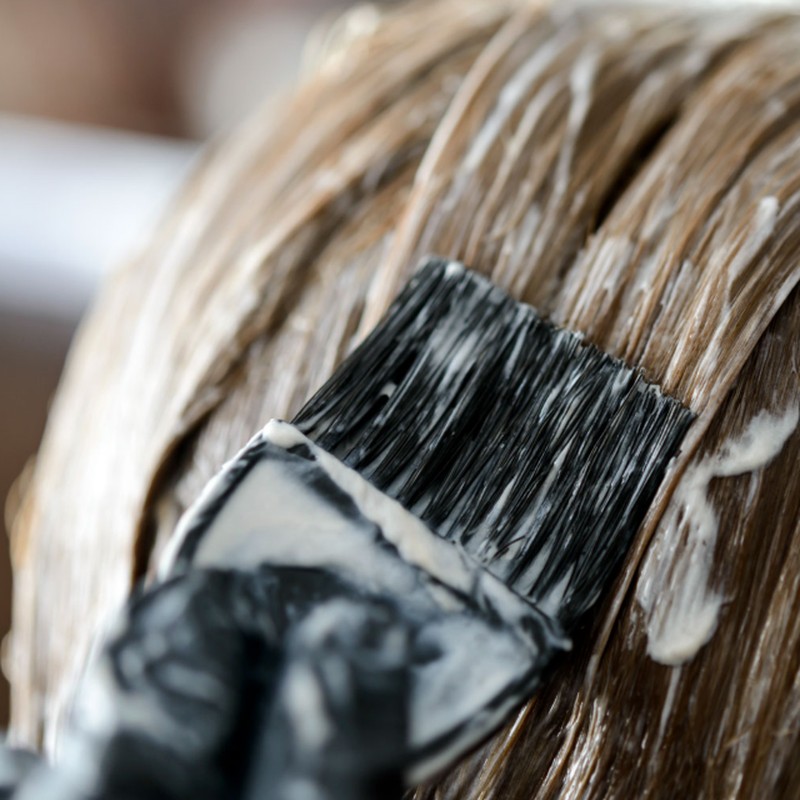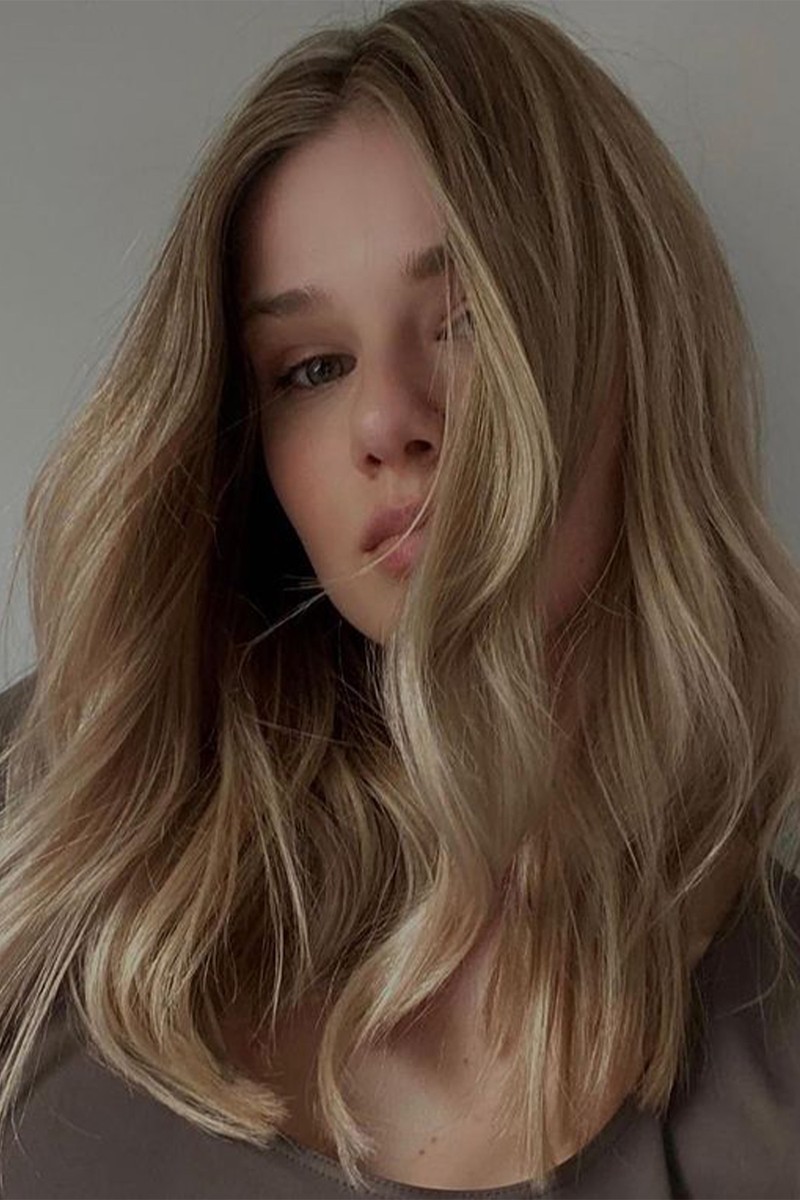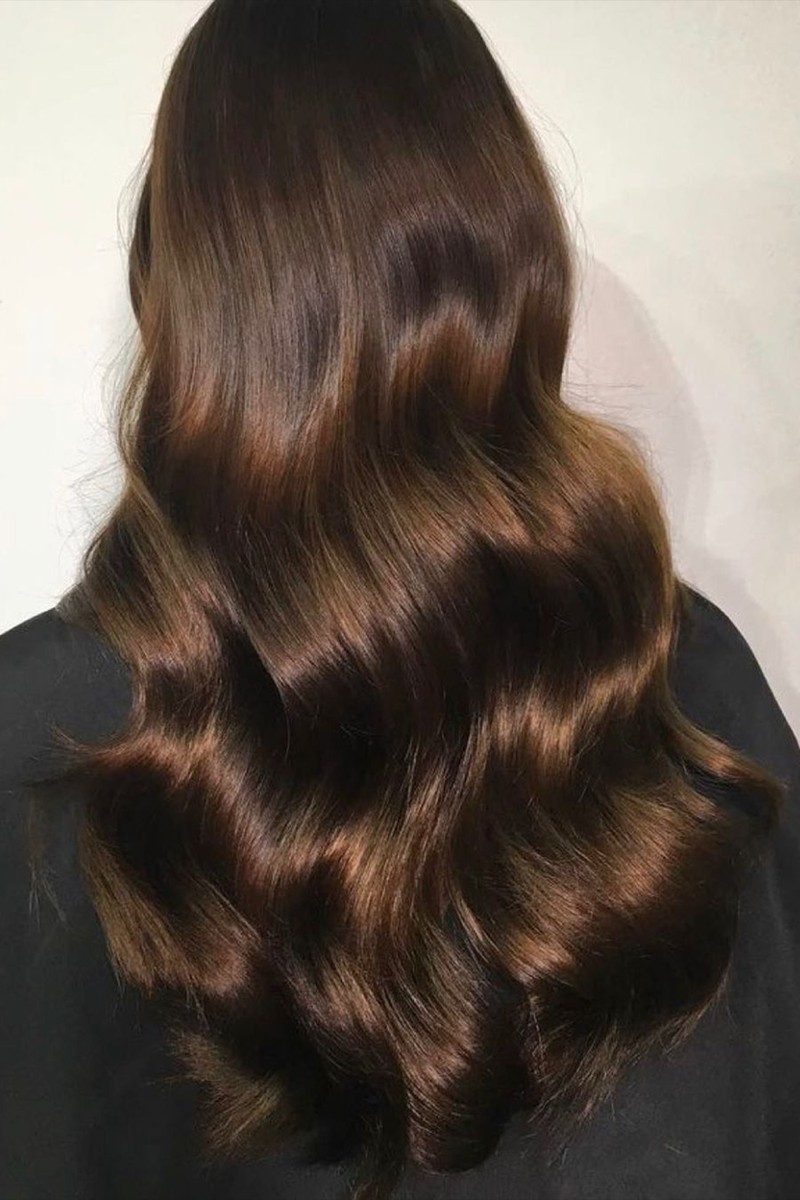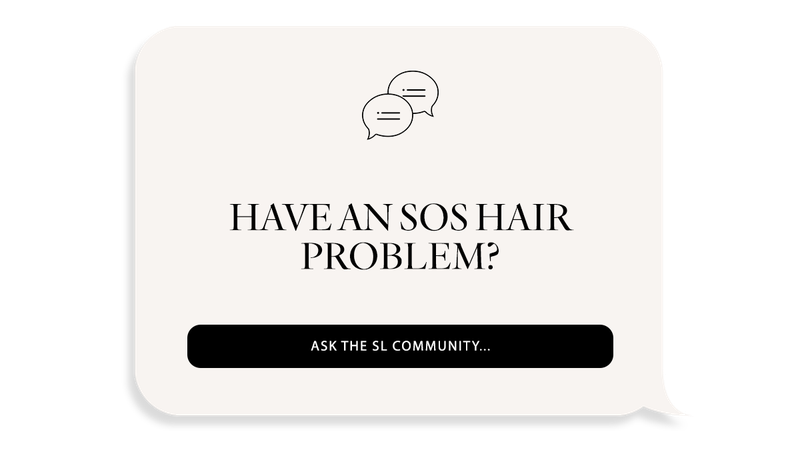On-Trend Hair Colouring Techniques Explained By An Expert
Balayage
This popular technique creates super-soft, sun-kissed colours throughout the hair. It’s achieved by leaving natural colour in between lighter pieces and backcombing the coloured pieces to soften any lines. It can also be done by painting diagonal sections of the hair and leaving sections in between completely natural. Balayage is a low-maintenance ‘lived-in’ style that’s subtle, but can be built up over time – perfect when you’re ready to hit refresh but don’t want a major overhaul. It works on most hair types and colours, and can transform a one-tonal solid colour into ribbons of different shades.
Wet-Lights
The clue is in the name for this one. We apply what we call ‘the lights’ to wet hair when the cuticle is open. Doing this helps to break up the base by a couple of shades, so it’s ideal for covering a harsh hairline or fluffy regrowth. It’s also better for your hair because applying it wet helps to restrict extreme damage, leaving hair stronger, smoother and healthier looking. I often recommend it to those wanting just a slight hint of lightness, or for anyone wanting to break up more solid shades. Wet lights will only lift you a couple of tones, so it’s one of the softest and most subtle techniques you can go for.
Ombré
Ombré melts darker roots into brighter ends. It’s a lot more obvious than balayage because there’s no definition of natural colour through the ends. Rather than picking pieces and leaving natural shade in between, this technique picks up every strand of hair and colours the mid-lengths to the ends. The process has come a long way since it first started – it used to be a very noticeable transition, whereas now the techniques professionals use ensure a more seamless blend. Always make sure your stylist has blended the colour consistently and thoroughly, because if not it will look like a dip-dye job.
Permanent Colour
Permanent colour won’t fade when you shampoo and won’t leave the hair cuticle. It’s usually best for clients who have more than 70% grey hair or stubborn grey hairs that won’t take a semi-permanent option. If clients have fine hair or only a few grey hairs, permanent colour can be harsh and start to look unnatural over time. In those cases, semi-permanent colour is preferable.
Highlights
Highlights are old school, but they still reign supreme. Stylists apply them in a weaving technique, placing colour directly onto the root. The hair is then neatly folded into foils and placed under heat, which encourages the foil to lift the hair to its desired potential. Depending on the thickness of your hair, you can have chunky highlights or baby fine highlights, which are created by leaving sections of your natural hue in between each strand of new colour. They can be used in so many ways – whether it’s to break up colour, add definition or brighten up the overall look.
Lowlights
This colour-lightening technique always includes a natural base tone. Lowlights are then used throughout the mid-lengths to add definition to the ends, achieving a ‘shadow’ effect while breaking up any blockiness from highlights. Lowlights reduce the need for colour maintenance because they soften the regrowth by applying your own natural colour throughout – ideal for anyone who wants something subtle.
Reverse Balayage
This is for those with ombré hair who are looking for a more natural, broken-up colour. It is also for clients who have had over-processed balayage, where repeated application has left them with an ombré style. Reverse balayage is all about adding the client’s natural hair colour back in. The stylist paints natural colour through the mid-length to the ends, giving hair more definition and reversing it from ombré to balayage. This technique often works best on darkening lighter hair – think blonde roots to coffee-coloured tones – although most hair types can try it.
Smudging
Smudging is another technique that breaks up the base of your colour, either to blend out your roots or to soften things up. It’s usually applied on wet hair and used like a tint – it stays on for a few minutes until it has lifted the hair half or a whole shade up. It’s perfect for dark blondes, but if you have darker hair, it throws off too much warmth and you’ll likely end up with what’s called a ‘root glow’ – in other words, a lighter root that’s very visible.
Chunky Lights
Chunky lights have become more popular recently and they’re a good option for those with thicker hair who want obvious colour. The chunkier you go, the more visible they become – especially when the light catches them. If you want something more subtle and discreet, baby lights are the better option, but the chunky technique can give great movement and weight to hair.
OUR FAVOURITE SALONS FOR A COLOUR OVERHAUL
Hari’s Hairdressers; Across London
Hersheson’s; Across London
Myla & Davis; Across London
Trevor Sorbie; Nationwide
Larry King; Across London
John Frieda; Nationwide
INSPIRATION CREDITS: Instagram.com/HarisHair
DISCLAIMER: We endeavour to always credit the correct original source of every image we use. If you think a credit may be incorrect, please contact us at info@sheerluxe.com.





